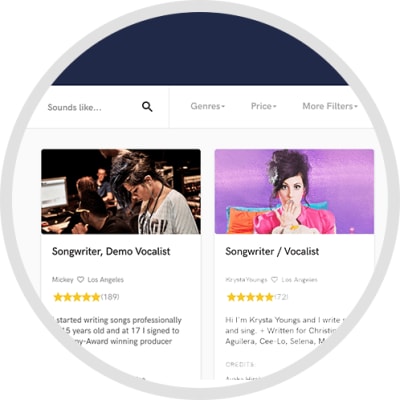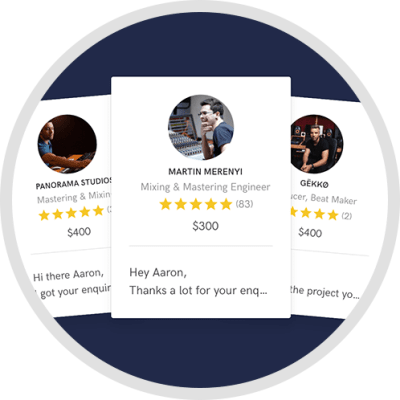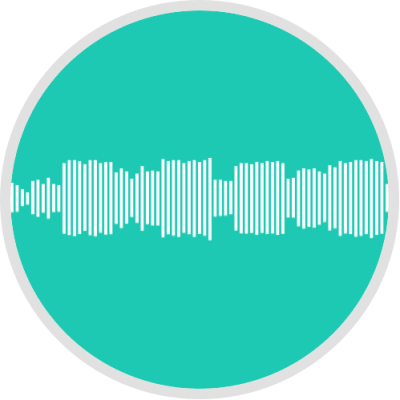
Digital Audio and Sound Synthesis expert.
I specialize in the creation and aesthetic manipulation of sound, merging my passion for music with a deep understanding of both digital audio synthesis and processing. As an experimental sound composer, my focus is on exploring new sonic horizons through advanced techniques of sound composition and manipulation. I use tools like compressors, equalizers, and reverbs not just as utilities, but as means to sculpt sound and craft immersive and unique atmospheres.
Additionally, I'm an expert in digital audio programming in the Pure Data environment, which allows me not only to have comprehensive knowledge in the field but also the freedom to explore beyond standardized market resources.
I excel in the aesthetic manipulation of audio processes, employing tools like brushes to sculpt sound and create distinctive, enveloping atmospheres. I offer a wide range of music composition services, from crafting sound textures to producing samples tailored to the needs of musicians, audiovisual producers, and game developers. My aim is to deliver innovative sound solutions that enhance and enrich each project.
Click the 'Contact' above to get in touch. Looking forward to hearing from you.
Credits
Discogs verified credits for Damian AnacheLanguages
- English
- Spanish
Interview with EstudioElectroacustico
Q: What are you working on at the moment?
A: Mastering my new album.
Q: Analog or digital and why?
A: Both, none of them is better than the other.
Q: What's your 'promise' to your clients?
A: My commitment is to offer professionalism, dedication, and meticulousness in my work.
Q: What advice do you have for a customer looking to hire a provider like you?
A: Work with a structured agreement framework: first, exchange references and examples of starting points by both parties to understand what is desired and what can be offered. Then, define a number of instances for evaluating intermediate results before reaching a final outcome that is satisfactory for both parties.
Q: If you were on a desert island and could take just 5 pieces of gear, what would they be?
A: First and foremost, I would bring a solar power generator system, otherwise I won't be able to connect my laptop. Additionally, I would take my old Sony headphones, my Tannoy monitors, my custom MIDI controller full of knobs, and another one with touch-sensitive pads (Keith McMillen's QuNeo).
Q: What was your career path? How long have you been doing this?
A: I started as an amateur in my teens during the 90s, playing bass in a garage punk rock band. After working as a self-taught musician and collaborating with musicians from various backgrounds, I began my university studies in music composition with technology. Around 2010, I started doing professional work for others in my recording studio, which I maintained until the beginning of the pandemic. Alongside this activity, and after obtaining my doctoral degree, I have always worked as a university lecturer, where I have over 12 years of experience.
Q: How would you describe your style?
A: Unusual. Orderly chaotic and intensely slow.
Q: Which artist would you like to work with and why?
A: I would like to work with Brian Eno. I imagine he must be a polite, courteous, and kind person from whom I could learn much more than just artistic things.
Q: What type of music do you usually work on?
A: I work with experimental electronic music, ambient, and noise. In the past, I have worked extensively with classic rock bands, punk rock, and industrial rock.
Q: What's your strongest skill?
A: Innovation.
Q: What do you bring to a song?
A: My contribution focuses on unique and rare sounds that deviate from the mainstream. Depending on the type of repertoire, I can add synthesized textures, layers of processed abstract sounds, or even rhythmic structures with radical noises.
Q: What's your typical work process?
A: First, I request reference works to fully understand the client's request. Then, I create a brief sketch to finalize the work to be done. Once the sketch is approved, I proceed to the full-scale creation. After the approval of that version, I move on to the final mixing and mastering.
Q: Tell us about your studio setup.
A: I mainly work with digital synthesis using software. So my equipment includes my computer (which I regularly update), a Motu 8A sound card, and for microphone preamplifiers I use a SoundDevices device. My main microphone is an AKG 414. For monitoring, I use active studio monitors by Tannoy and various Sony headphones, such as the MDR 7506 and 7609 models. Regarding software, I primarily work on the Linux operating system, using programs like Reaper and Ocenaudio. I also have extensive experience and training in the Pure Data programming language, where I create my own compositional systems and synthesizers. Additionally, I have MIDI controllers to streamline interaction with the software.
Q: What other musicians or music production professionals inspire you?
A: Brian Eno, John Cage, Alva Noto, Harold Budd, Aphex Twin, Pan Sonic, Ryūichi Sakamoto, Stars of the Lid, Biosphere, Trent Reznor & Atticus Ross, Boards of Canada, La Monte Young, Kraftwerk, Robert Fripp, Erik Satie, Steve Reich.
Q: Describe the most common type of work you do for your clients.
A: Musical composition using digital media, such as synthesizers and samples. I can also produce sound materials, like specific sounds for video games.

I was the composer and producer in this production
- Sound DesignContact for pricing
- Game AudioContact for pricing
- RemixingContact for pricing
- Film ComposerContact for pricing
- Keyboards - SynthContact for pricing
- EditingContact for pricing
- ProducerContact for pricing



